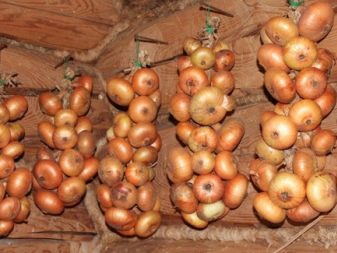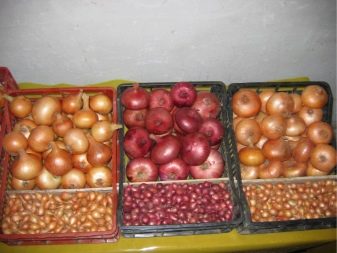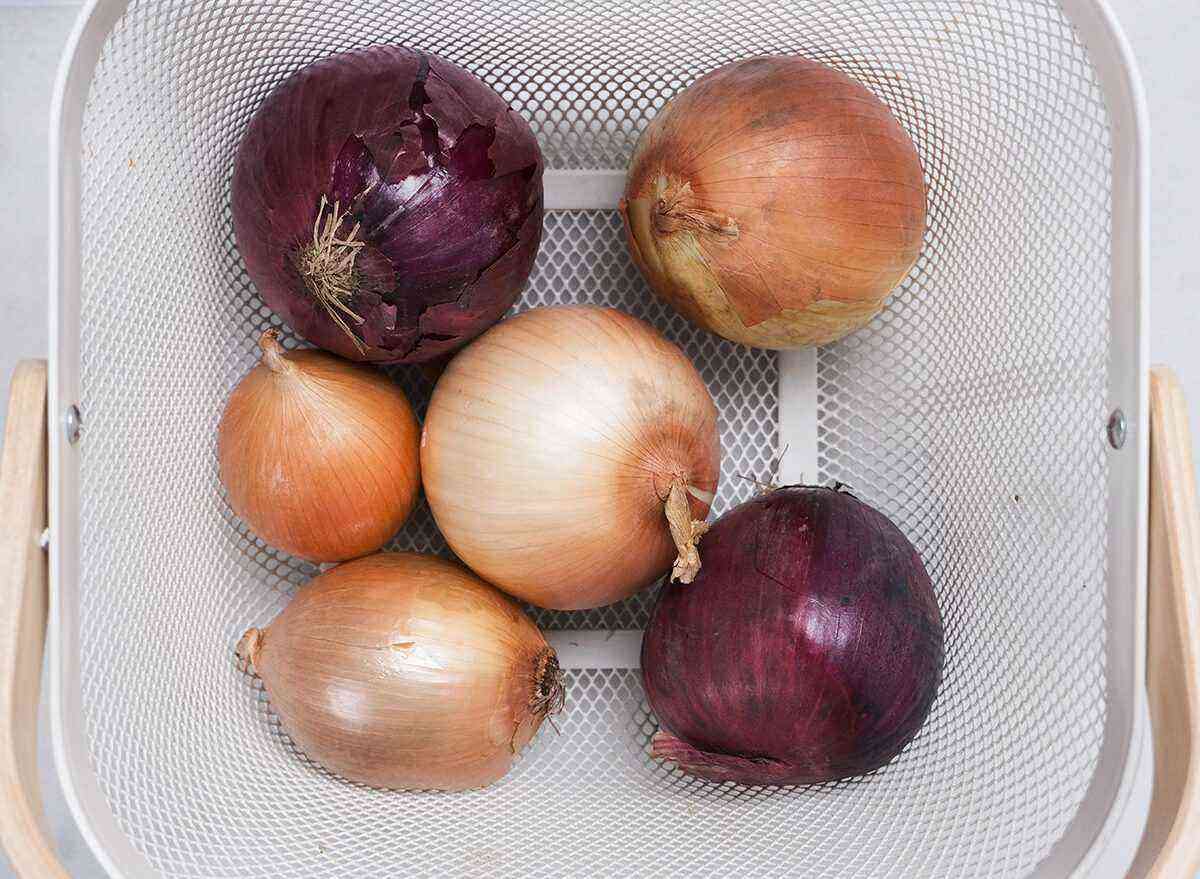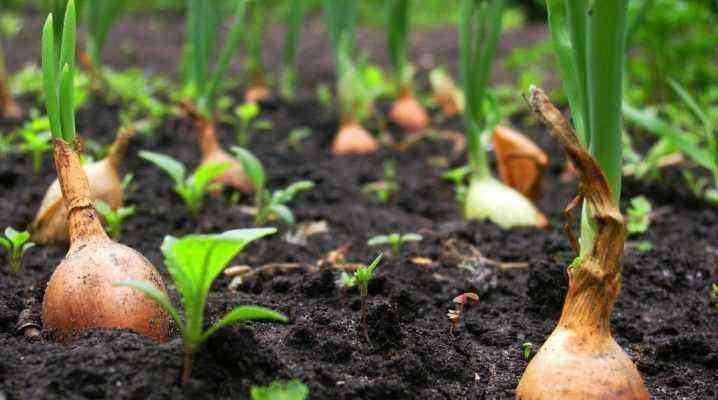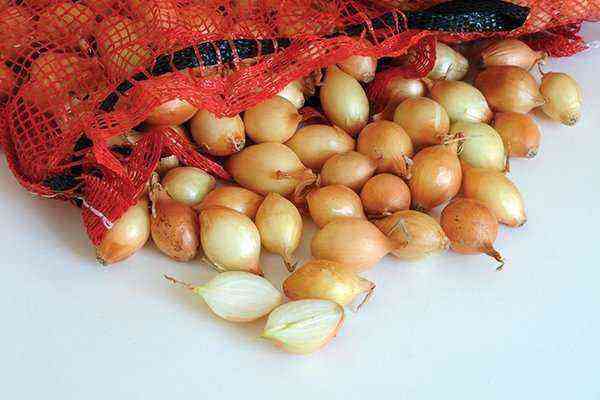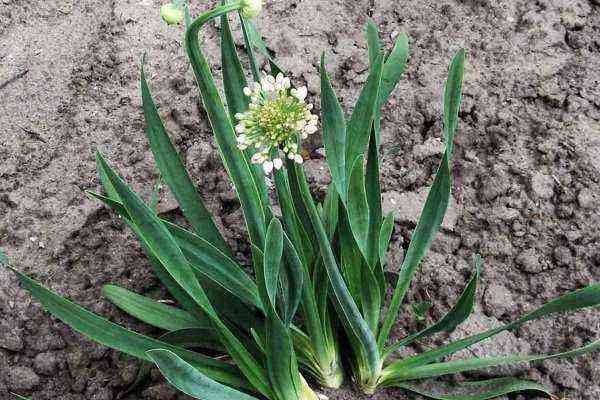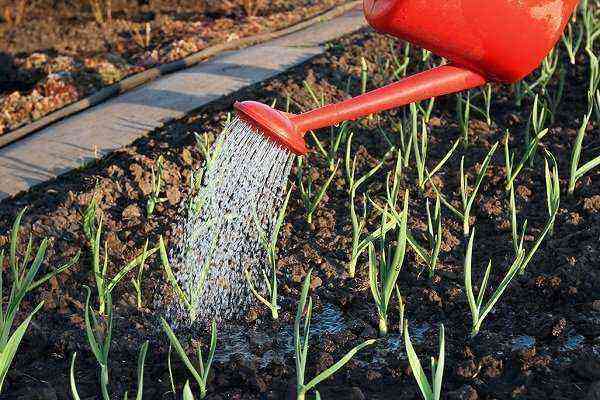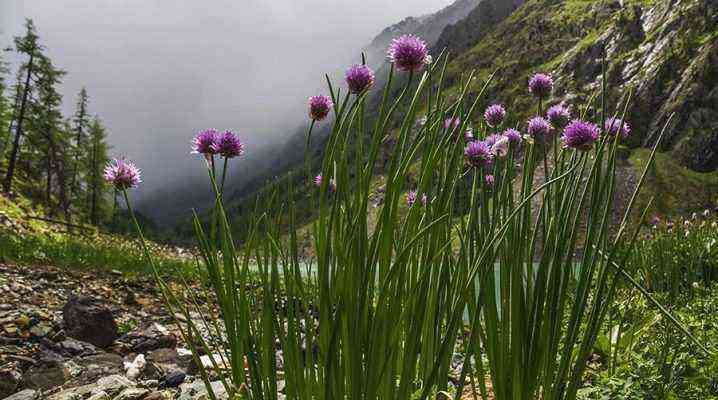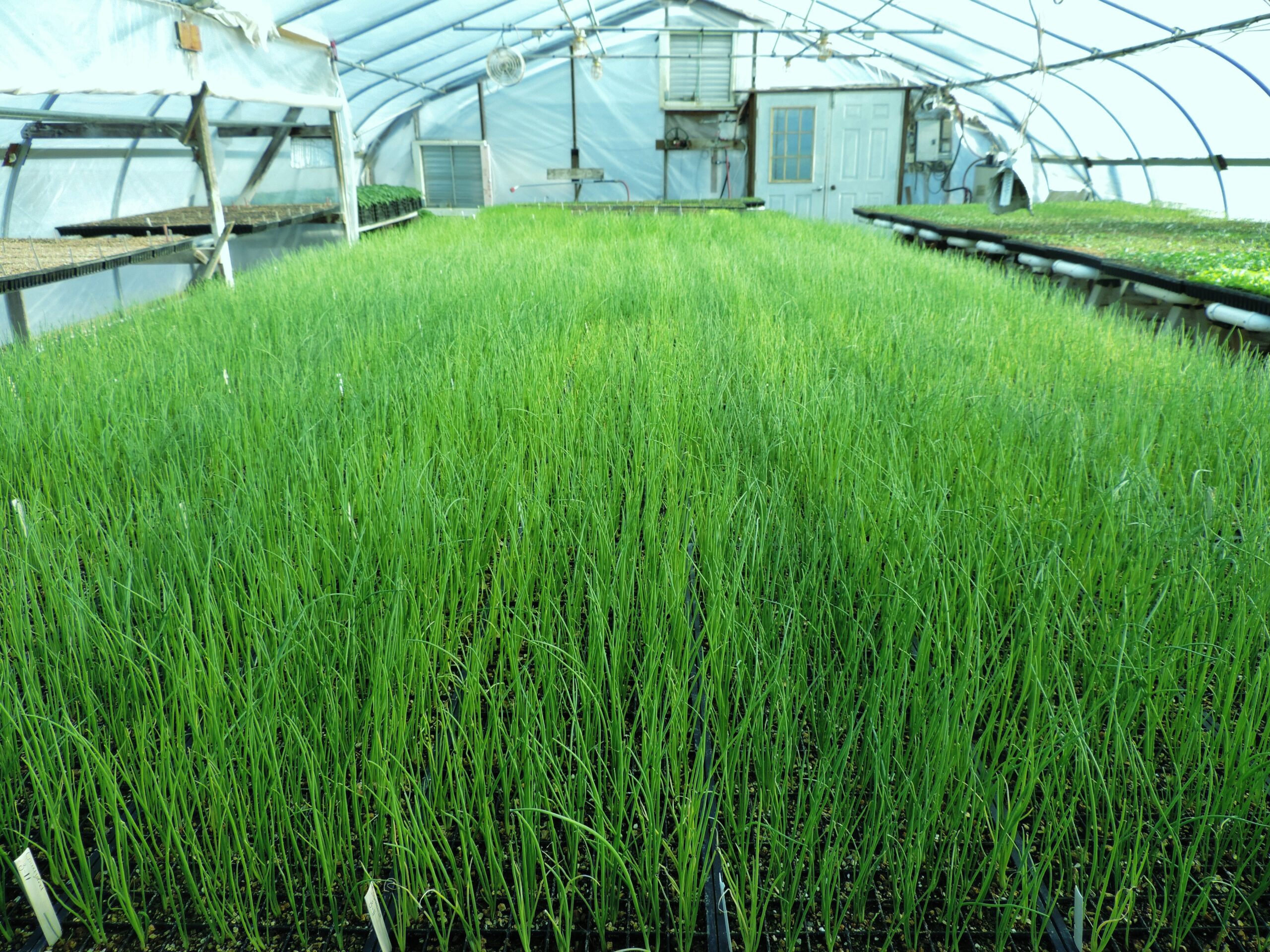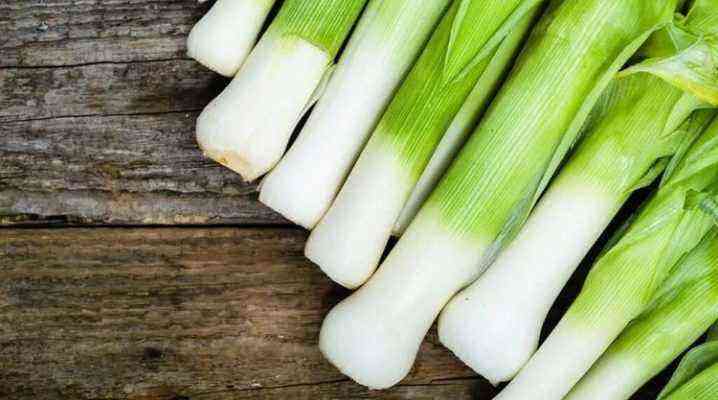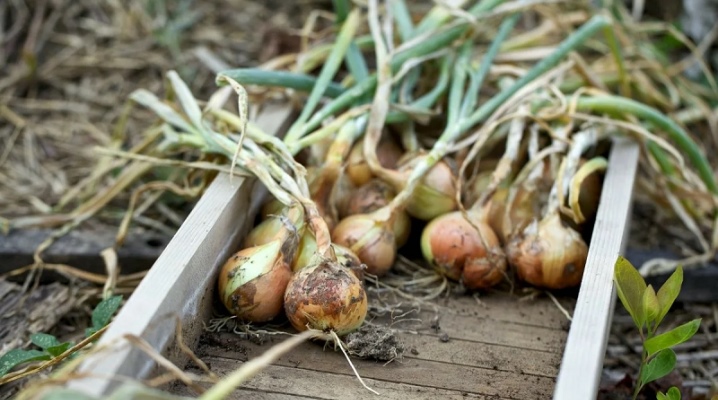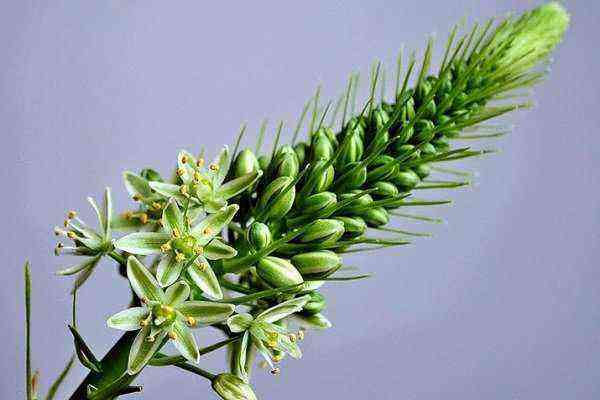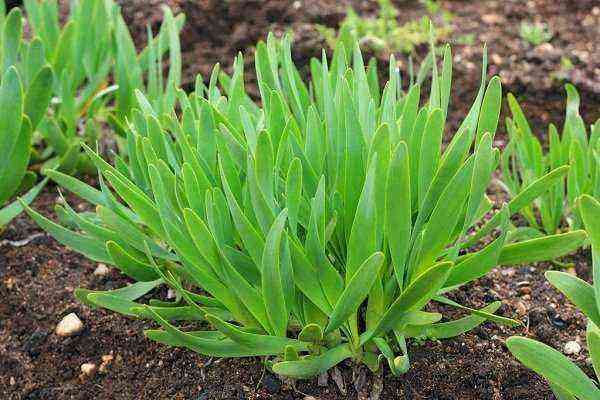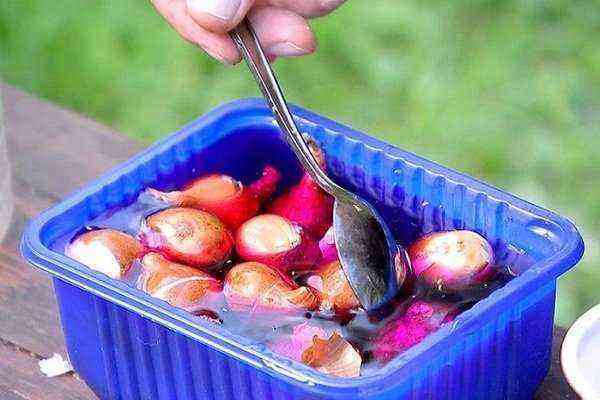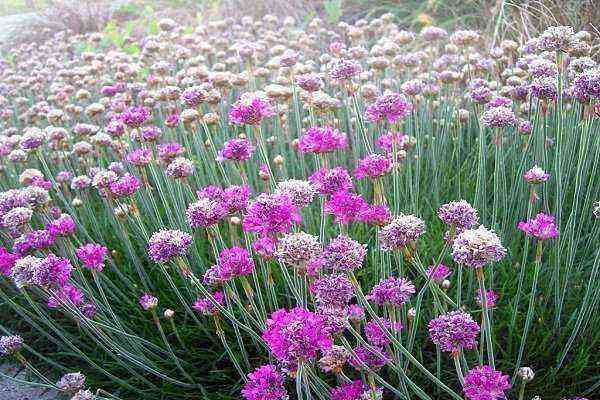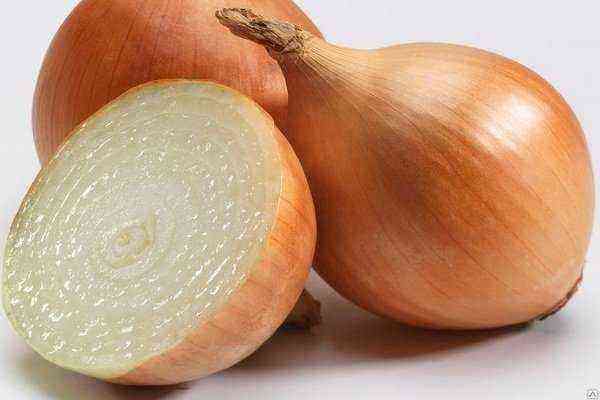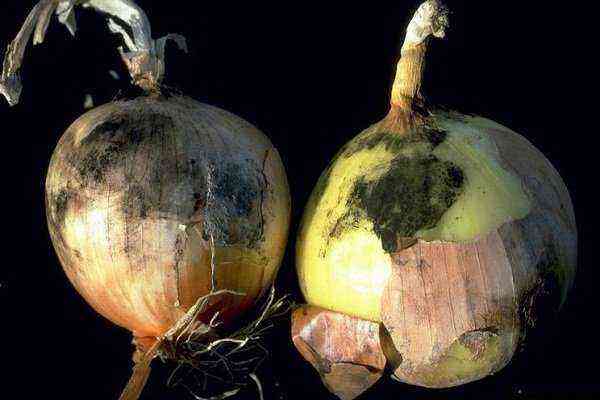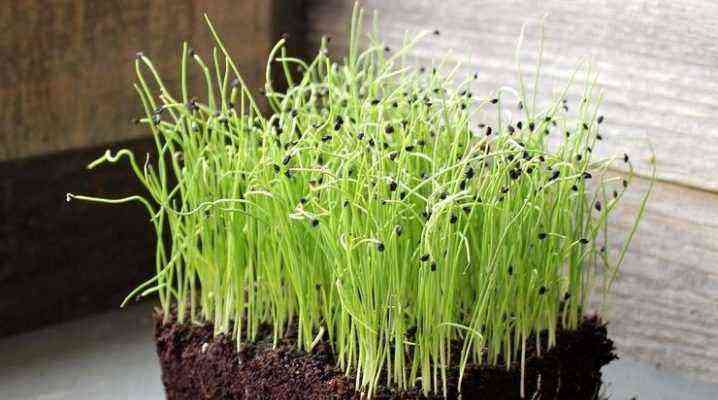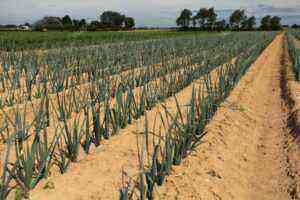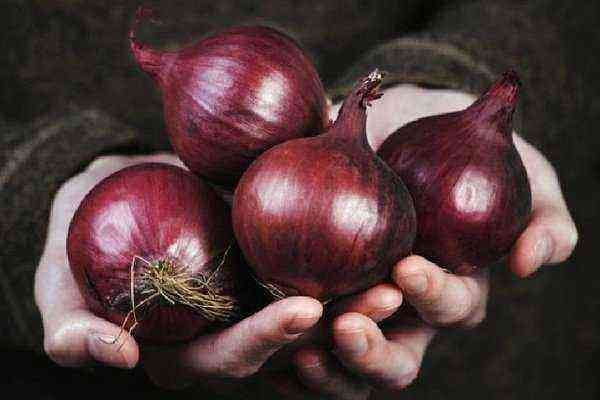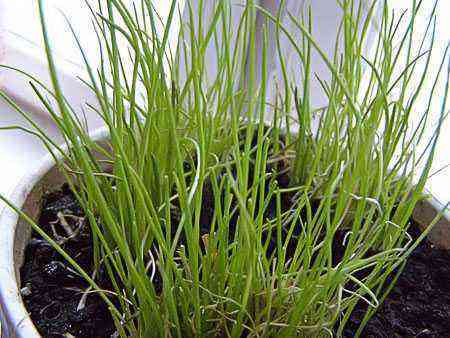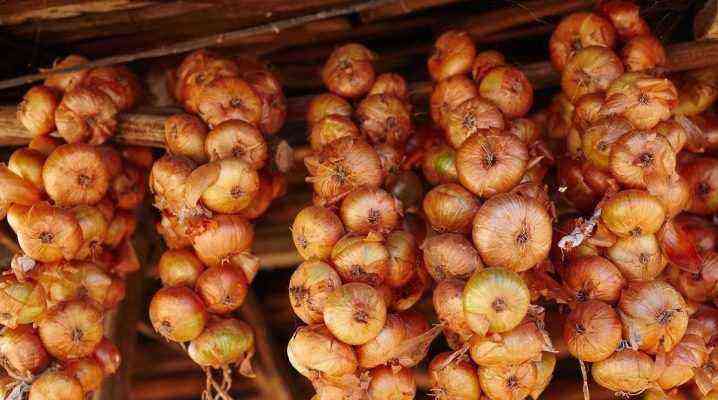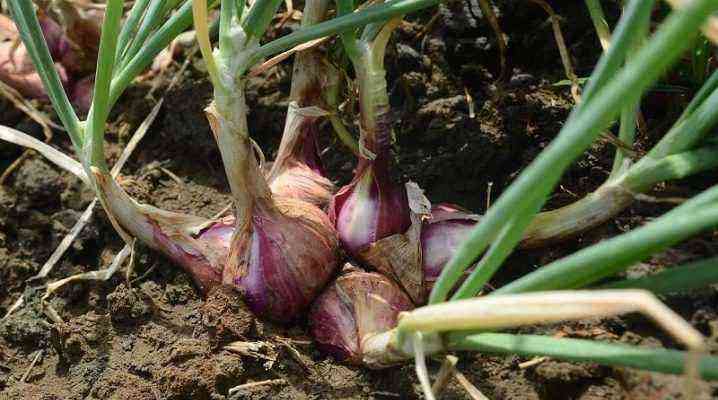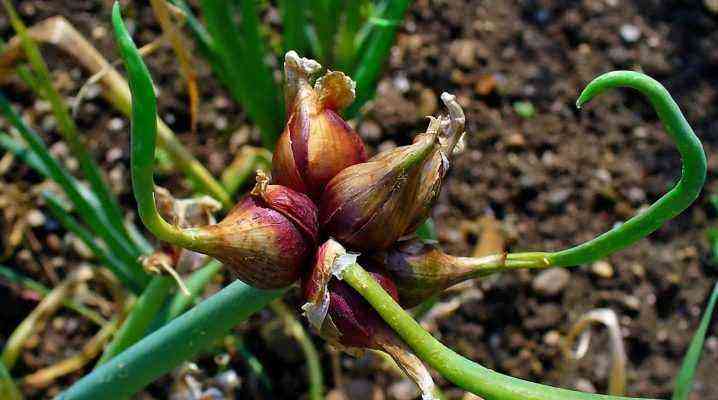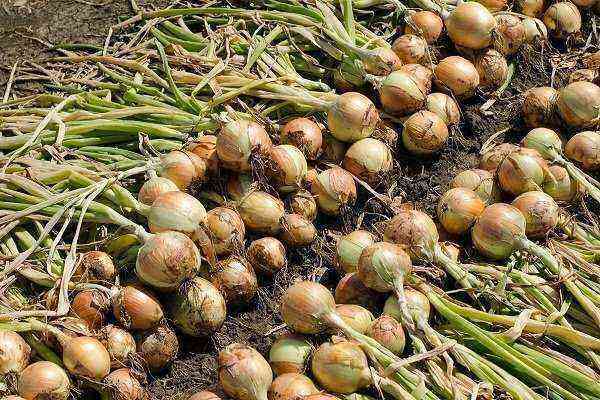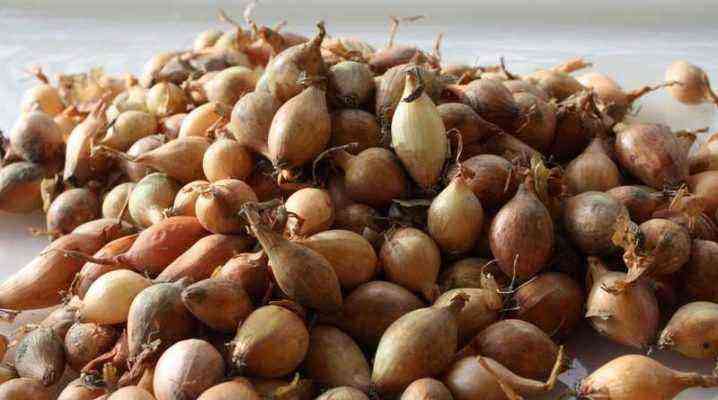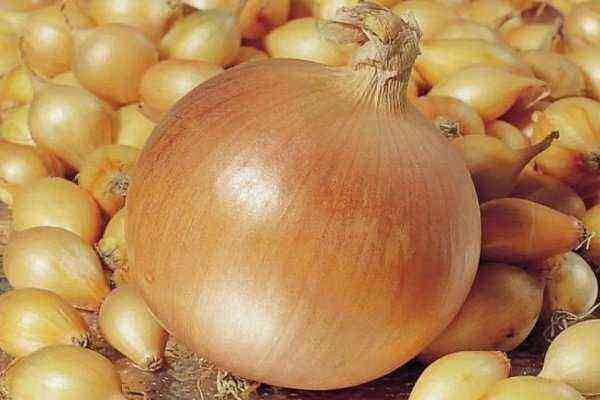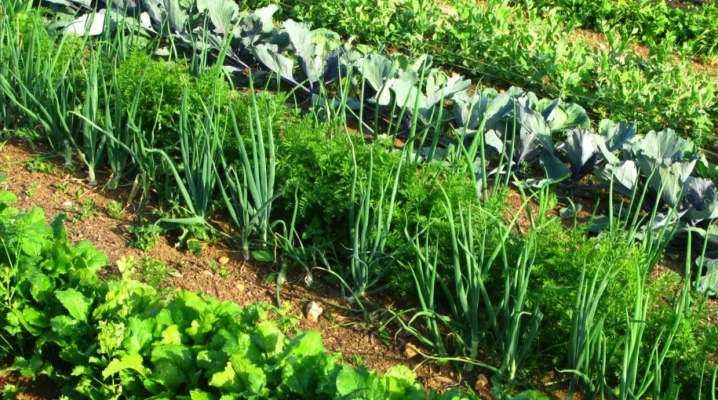
Only those gardeners who know everything about onions, the structure of turnips and the type of bulb nutrition can call themselves advanced. In addition to a general description of the culture and what parts of it look like, knowledge of practical characteristics is also useful. Along with this information and data on how onions are propagated, it is useful for inquisitive farmers to understand the history of the origin of such a crop.

Description
Onion is a species of the genus of onions belonging to the Amaryllis family and belonging to the asparagus order. The international scientific name for the culture was given in 1753, and since then its botanical systematics has only been refined. Onion is a perennial herb that is widely used as a garden vegetable in different countries. The bulb looks like a small turnip, which is the reason for the specific name.
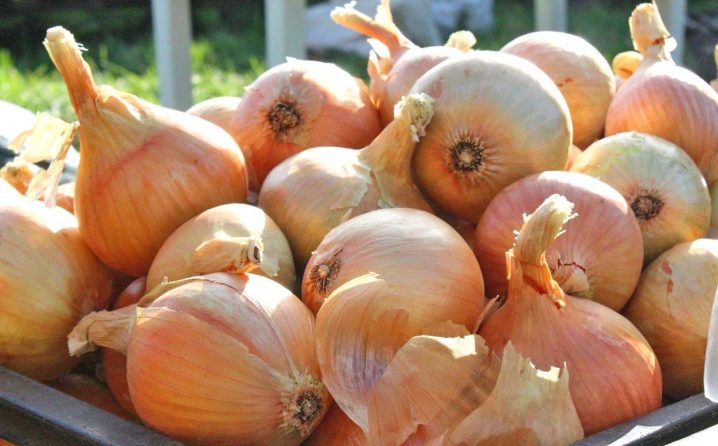
The cross section of large bulbs can reach 15 cm, and they all belong to the membranous type.
The scales located outside are usually dry. Usually they are painted yellow, sometimes white or purple. The scales located inside are fleshy. They are characterized by a white, purple or light greenish color. An important characteristic of the appearance of onions is the bluish-green color of its tubular foliage.

This species can throw out a flower arrow up to 150 cm high. It is always hollow and slightly swollen. Such an arrow ends with an umbrella inflorescence, which includes many flowers. Each of these flowers rests on an elongated pedicel. Describing the constituent parts of the plant, it is worth mentioning the white-green perianth with a cross section of not more than 10 mm, which includes 6 leaves. The fruit of this plant is described as a box. It will contain up to 5-6 seeds. Each seed is painted black, covered with wrinkles. The seeds are relatively small. By type of nutrition, like other plants, onions are autotrophic species.

Normally, flowering occurs in the first two-thirds of summer. Fruit ripeness can be expected during August. Among the features of the root system, one should mention its weak general development. At first, the roots grow like a string. Only then will they give more pronounced branches, which will be covered with hairs.
Even in the developed state, the key part of the roots is concentrated at a depth of 5 to 20 cm. As soon as the leaves die, the roots will also begin to die. It is worth noting that sometimes the plant blooms earlier than usual. To do this, it is necessary that the temperature be stable at least +18 degrees against the background of dry, clear weather. The difference in flowering time, both up and down, can be from 3 to 20 days.
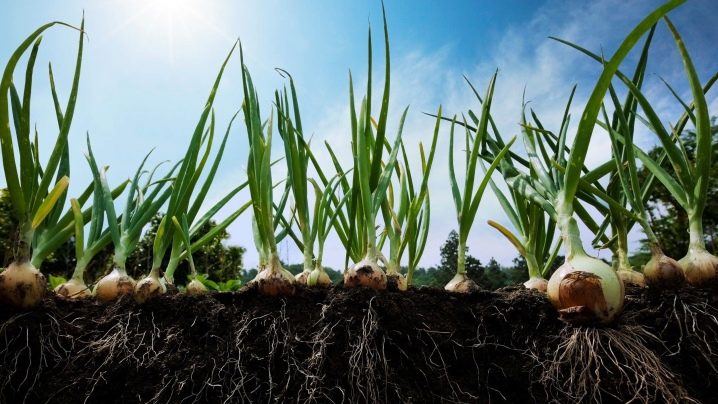
Not only weather conditions matter, but also the variety, and a suitable habitat – almost all countries of Europe and Asia.
History of origin
It is impossible to determine exactly where the onion comes from. There are only assumptions that the birthplace of its first cultivated forms is the lands of present-day Iran and Afghanistan. This should not come as a surprise, since there once existed highly developed agrarian communities by ancient standards. The date of cultivation of onions is about 4000 years ago. Experts found out that he was widely known in ancient times to the Greeks, and the Indians, and the Egyptians.
In the era of slavery around the bow there was a whole system of magical ideas. The ancient Romans believed that it was a source of energy, strength and courage, therefore the famous legions could not do without onions for a day. This culture is mentioned both in biblical texts and in Sumerian cuneiform tablets. Later, during the period of feudalism, onions became an everyday food in the countries of the western Mediterranean, including France. There, by the XNUMXth century, it was comparable in importance to the current role of cabbage.
In the XII-XIII centuries, this culture became known in our country. Over time, her culinary demand only increased. Later, with the advent of the era of great geographical discoveries, onions turned out to be very popular in the New World. It quickly became relevant in both North and South America.

Landing
But even the centuries-old experience of growing such a plant does not mean that all summer residents are aware of the features of its development. Sevok for planting in the spring is obtained from seeds quite simply. However, the difficulty is to keep it through the winter. Strictly adjusted indicators for temperature and humidity are not too easy to provide.
In the absence of experience, it is better to purchase ready-made planting material at all, ideally these should be onions with a cross section of 1,5-2 cm.
But then you need to carefully choose the sets so that it looks good. If the storage went with the wrong temperature regime, during the growing season flower stalks will appear en masse, that is, you cannot count on a decent turnip. It is best to prepare planting material before planting, warming it up for 2-3 weeks at +20 degrees. The landing itself is carried out when the earth warms up to +10 degrees, at a level of 10 cm. The preparation of the ridge is carried out in advance, at least 14 days in advance, so that the soil sags evenly.
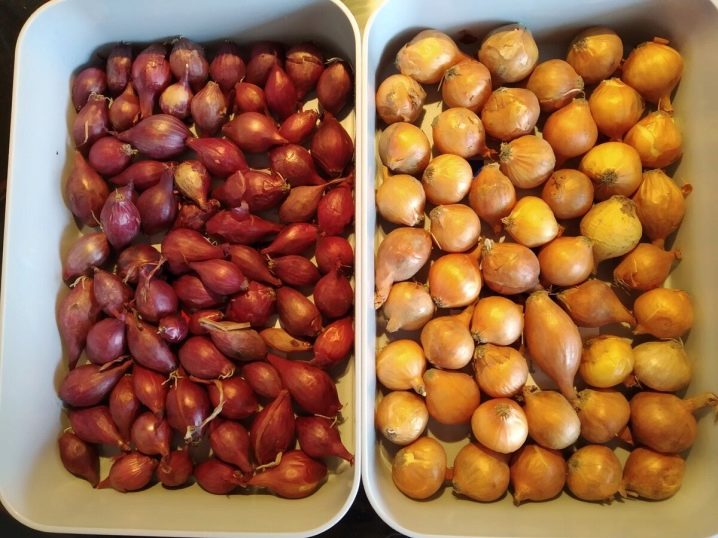
Onions do well in well-lit hills. But where precipitation and soil water are collected, he will have a hard time. Important: this culture does not deserve to be planted twice in the same place. Other types of onions and garlic will also be bad predecessors. But nightshade, cabbage, legumes and green manure herbs will prepare the soil in an optimal way. It should be noted that onions develop extremely poorly on land with high acidity, if it is not limed since autumn.
Having missed such a measure, it remains only to lay wood ash for digging. Some farmers prefer to use dolomite flour. The soil on the site needs to be saturated with nutrients and thoroughly loosened. For 1 sq. m add at least 6 kg of mature humus. Its quantity should be even greater if the soil is poor.

The introduction of rotted sawdust helps to increase the looseness of the earth. Their use on sand is also recommended, since this technique increases the overall moisture capacity. The planting procedure itself involves loosening with an interval of 20-25 cm. Furrows are shed with clean warm water and seeds are planted, making intervals from 10 to 12 cm. Turnips should be sprinkled with 2-3 cm of soil, and this is where the whole procedure ends.
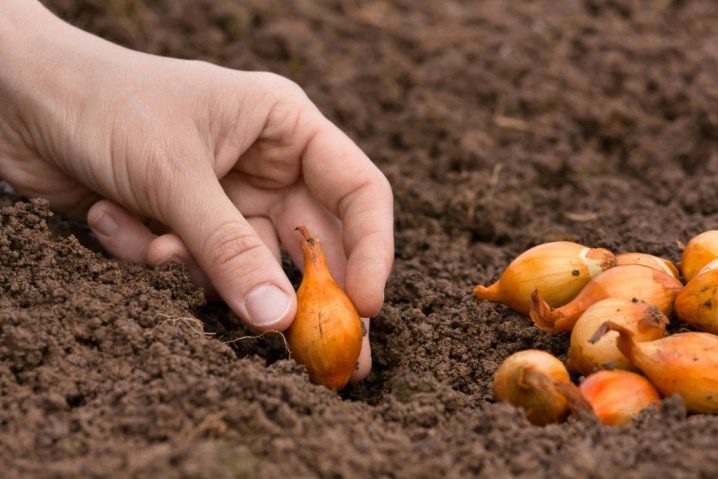
You can also start seedlings of onions. Before sowing seeds in containers, they are disinfected with permanganate and activated by boiling in hot water. The sowing itself is done in March, sometimes at the end of February, if favorable weather can be expected in early spring. Seedlings are systematically watered and fed, laying fertilizer 14 days after the emergence of shoots.

Transplantation into open ground is carried out after the appearance of at least 3 leaves. Roots longer than 40 mm must be cut off.
Care
Now consider the features of caring for planting onions.
Watering
Onions are moisture-loving. The earth must be kept in a stable wet state throughout the growing season. Any weeds are categorically unacceptable. After each watering, carried out and dosed as needed, the earth should be mulched. If this is not done, the crust will disrupt the uniformity of the distribution of moisture in the ground.
In such a situation, one cannot count on getting large turnips.
You can loosen the beds only on the surface, and only in wide aisles. If the rows themselves are loosened, deformed roots will disrupt the development of the bulb. Hilling is categorically unacceptable. On the contrary, the turnips themselves should be slightly opened. In combination with timely thoughtful watering, this will ensure a good result.
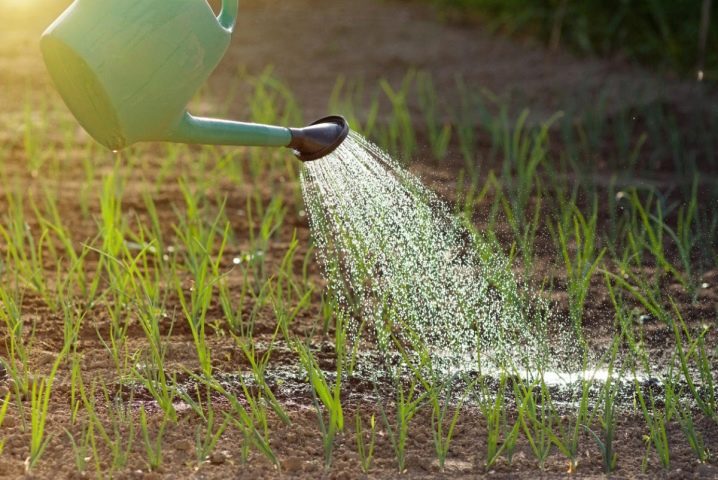
Additional fertilizing
For the first time, fertilizer is applied as soon as shoots appear. In this case, the feathers should reach a length of 10 cm. To activate growth, during this period, special emphasis is placed on nitrogenous mixtures. Top dressing is determined by the state of the soil, by how much it is initially saturated with useful substances. The second top dressing is carried out about a month later, when the plant enters the second stage of its vegetation.
Nitrogen is no longer needed at this point. But it is required to help the culture by supplying it with phosphorus and potassium. A similar goal is achieved by diluting 0,02-0,03 kg of superphosphate and the same amount of sulfate in 10 liters of water. The third top dressing is carried out at the moment when the bulb is finally formed and has reached 4 cm in diameter. Now the plant needs calcium, which allows the heads themselves to ripen.

Reproduction
In the north of Russia, onions are mainly propagated by vegetative means. This technique has been practiced for a long time. Planting material is selected very carefully. It is then stored at + 18-20 degrees. The optimal diameter of the bulb for planting is 2-3 cm.
If they are larger, then the turnips are cut before planting. But the disadvantage of this solution is that the cuts increase the risk of pest damage. It is necessary to plant onions vegetatively at the same time as the set or a little later, until May 20. The intervals between plants are 20-25 cm. Mulching is carried out with a layer of rotted manure, which will retain water and become an additional source of nutrition.
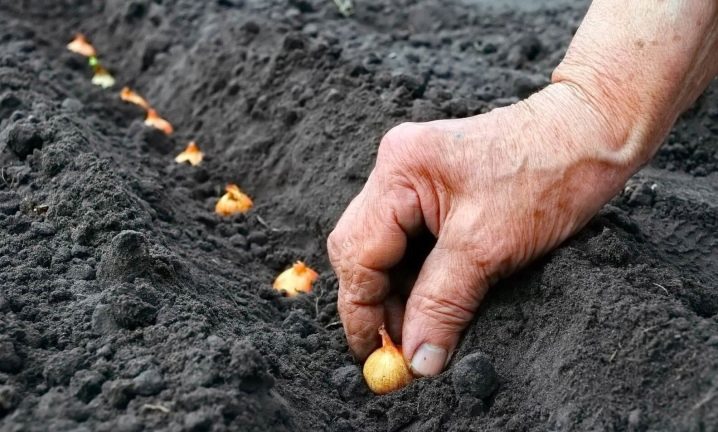
Diseases and pests
For onions, the danger is the onion fly. The traditional method of scaring off this pest is to plant carrots nearby. Another measure of protection is watering with salt water. It is poured exclusively under the root. Salt concentration – 1%.
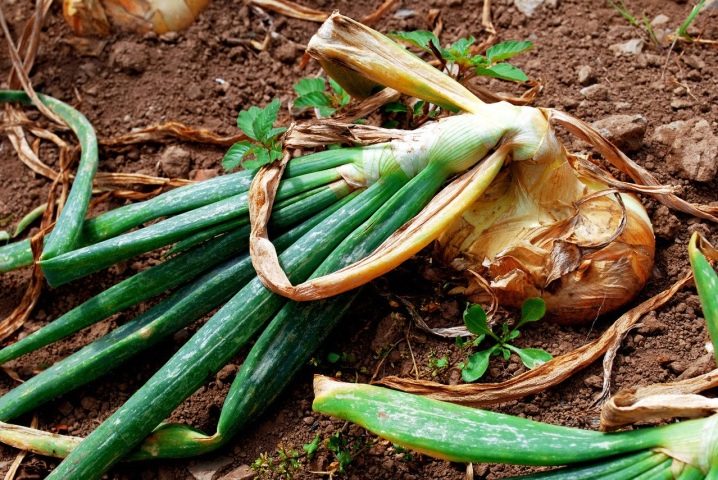
Such watering is carried out three times with an interval of 10 days. Some farmers use adhesive tapes or baits. From improvised means, the layout of pieces of fabric saturated with diluted birch tar helps. The nematode affects the onion rather weakly, but it should not be ignored at all. It is able to multiply rapidly and infect the entire garden.
The rapid lodging of seedlings may be associated with the invasion of the winter armyworm. Mostly caterpillars of this pest are dangerous. From the night butterfly and its pupae, digging the earth to a great depth in autumn and regular extermination of weeds are best of all.
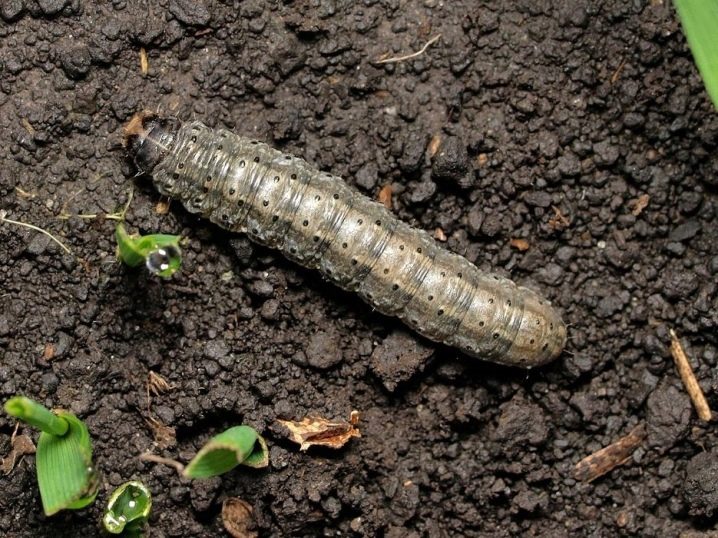
Pesticides are ineffective, because the insect hides in a layer of earth.
To exclude damage by downy mildew, 30 days after planting, the beds should be sprayed with a 1% solution of Bordeaux liquid. If this preventive measure is neglected, it will take a very long time to fight the disease. Onion plantings can also suffer from a variety of rot. If signs of Fusarium are found, the plants should be immediately culled. The fight against aphids is no less relevant.
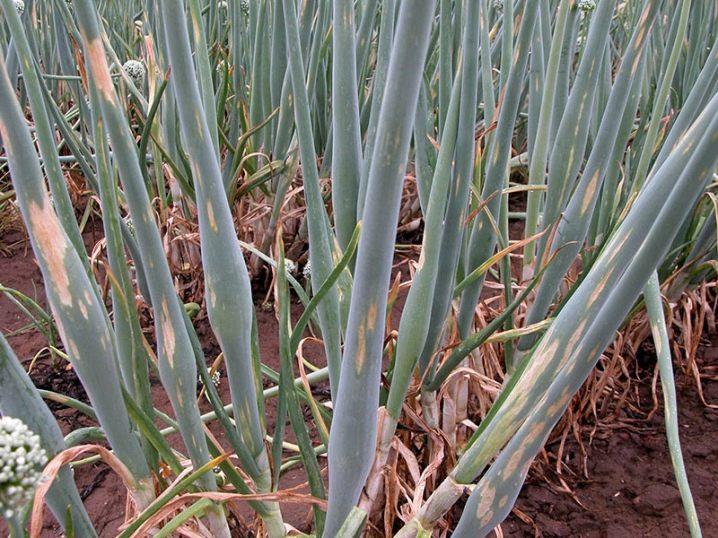
Also dangerous are:
- rust;
- downy mildew;
- aspergillosis;
- mosaic disease;
- stemphiliosis;
- tobacco thrips;
- onion secretive proboscis.
Cleaning and storage
Having successfully grown onions, protecting them from pests and diseases, one must still competently harvest and save them. When landing at the end of spring in the middle lane, the approximate harvesting time is the last decade of July. There is no point in focusing on the lunar calendar, here you need to look at the plant itself. Ready for collection is reached when the feather turns yellow and leans towards the ground. If the neck dries up and peeling of the peel begins at the bottom, then it is urgent to get down to business.
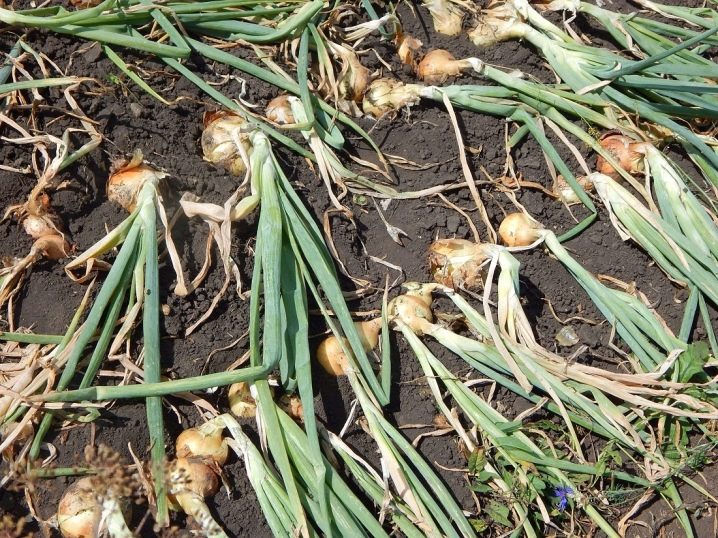
In different regions and under different weather, readiness for collection is achieved at different times. More often you should start looking at the beds 65-70 days after planting. It is worth choosing the most dry weather so as not to waste time drying.
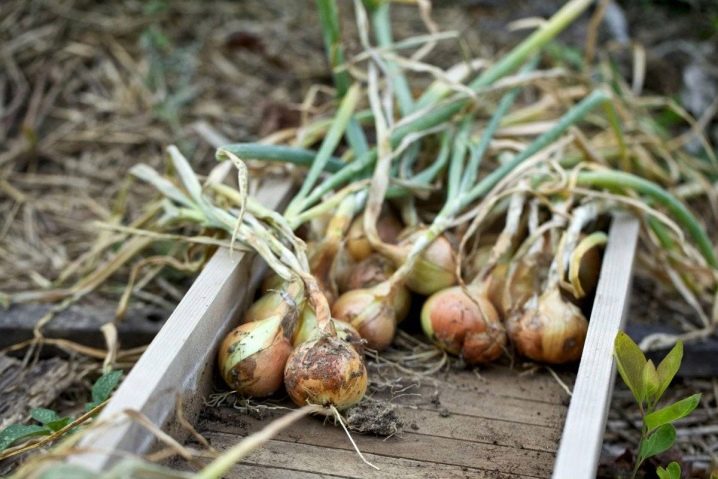
The more intact the collected bulbs, the better. Damaged copies should be used immediately and not stored.
The harvest left for the winter is taken out to the sun for 2 or 3 weeks every day, rotating it in different directions. At night, turnips should be kept warm and dry. When placing onions in boxes, it is undesirable to pile on a layer of more than 30 cm. The sides are certainly equipped with ventilation holes. It is allowed to use nets or canvas bags, even simple tying into suspended bundles will be relevant. In any case, the temperature should not be lower than 0 and not higher than +5 degrees.
